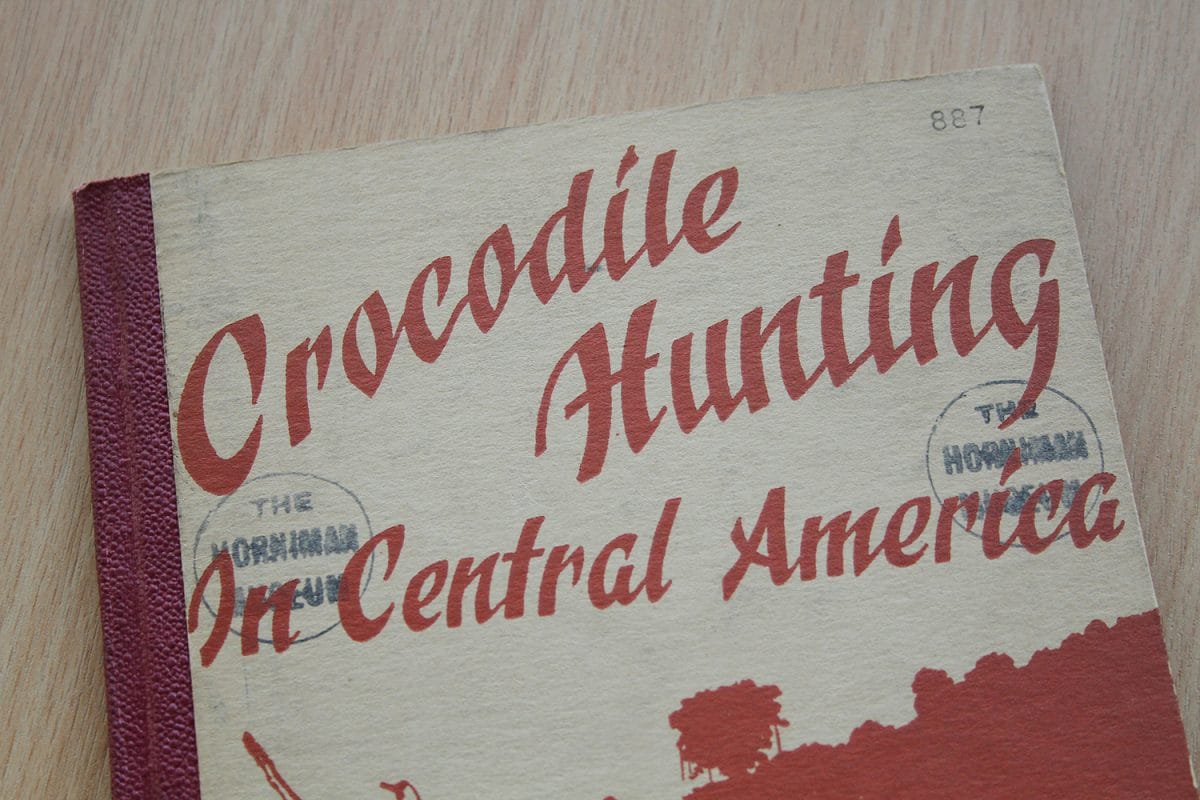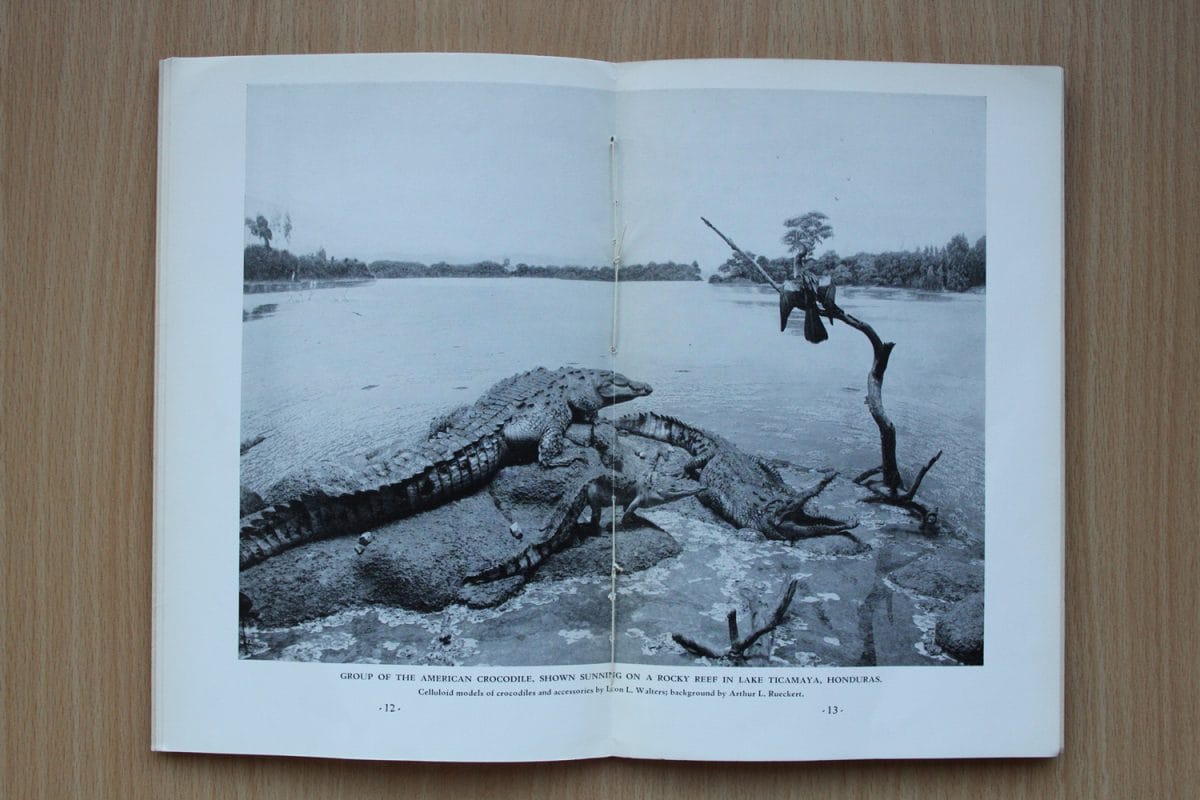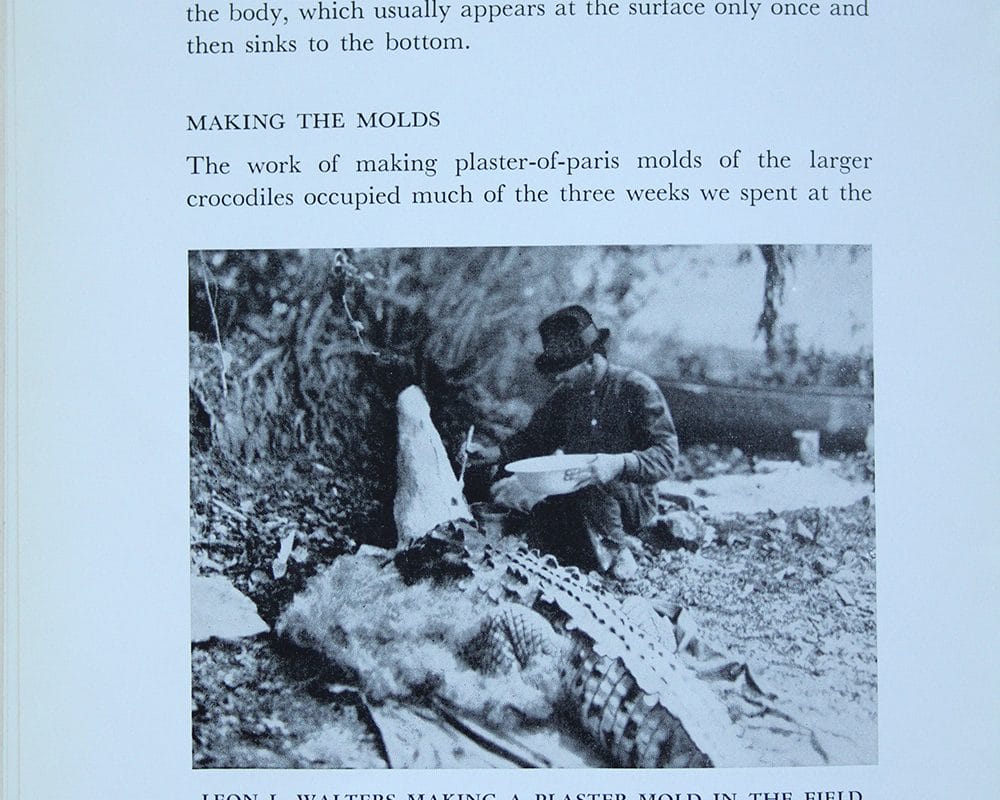While the title might be enough to entice a reader, what makes this book even more special is the fact it tells the story of some natural history specimens from a museum across the pond.
‘Crocodile Hunting in Central America’ was written in 1952 by Karl P. Schmidt, then Chief Curator of Zoology at the Chicago Natural History Museum (now the Field Museum). The book reports on a trip taken to Belize in 1923 with the aim of acquiring specimens for a new exhibition.
The crocodiles for the new display would not be taxidermy, but instead reproduced from a plaster cast of the animal. Unfortunately, it’s rather difficult to produce a cast of a living crocodile.
It’s surprising for anyone today to hear that collecting specimens for a museum display would involve hunting wild animals, but in the 1920s this was common practice. Without modern photography and film it was the best way to show those who were unable to travel the wonder and diversity of the natural world.
Of course, this is no longer supported by museums, which now aim to source their specimens using more ethical means, and for specific scientific purposes. Still, this volume is an important part of the historical record for all museums, including the Horniman, representing a period where we did things very differently.
The book also provides a detailed record of the ingenious methods used to create the replica crocodiles.
As it was published some time after the 1923 expedition, there’s even a photograph of the finished product on display in the Chicago Natural History Museum.
The Field Museum regularly share their archive photographs on Tumblr, showing how other specimens from their collection were prepared for display. We’d love to know if the archive includes some of the image from ‘Crocodile Hunting in Belize’.





